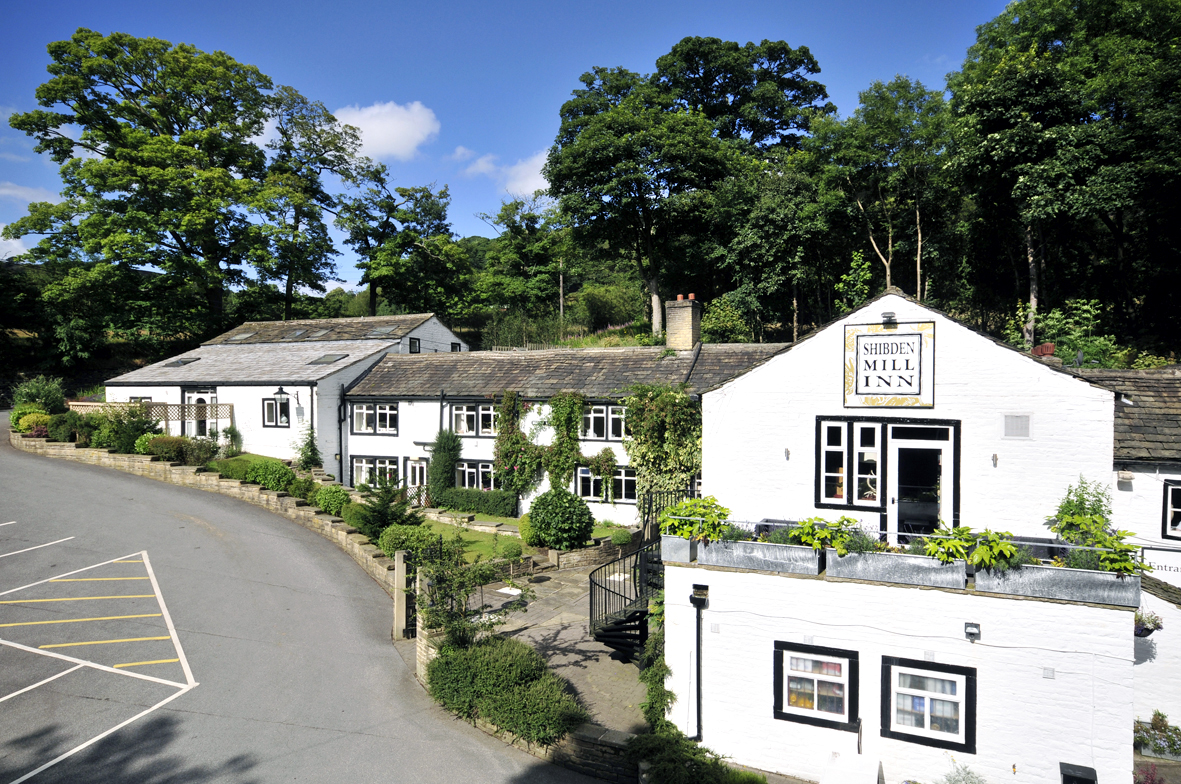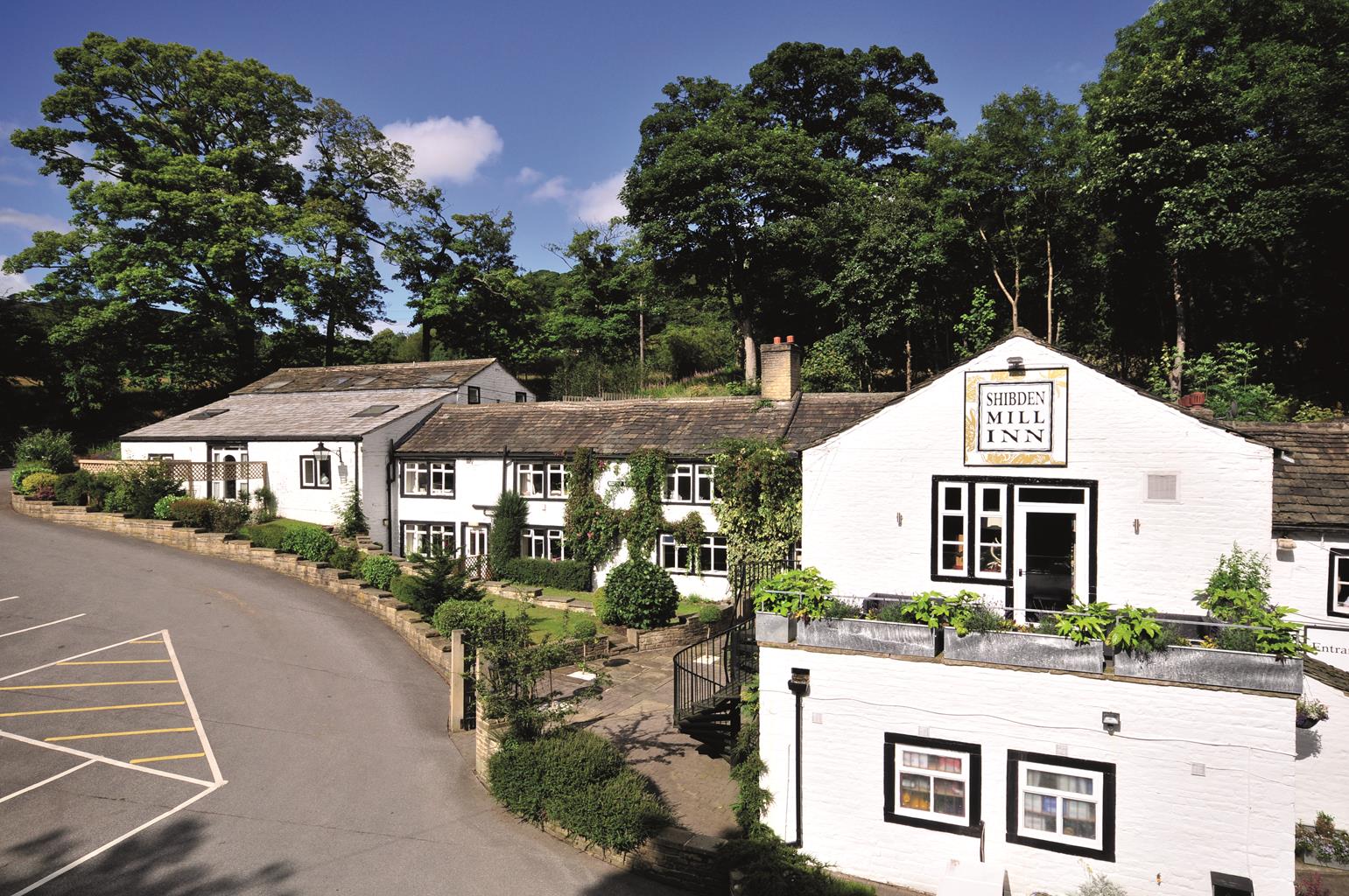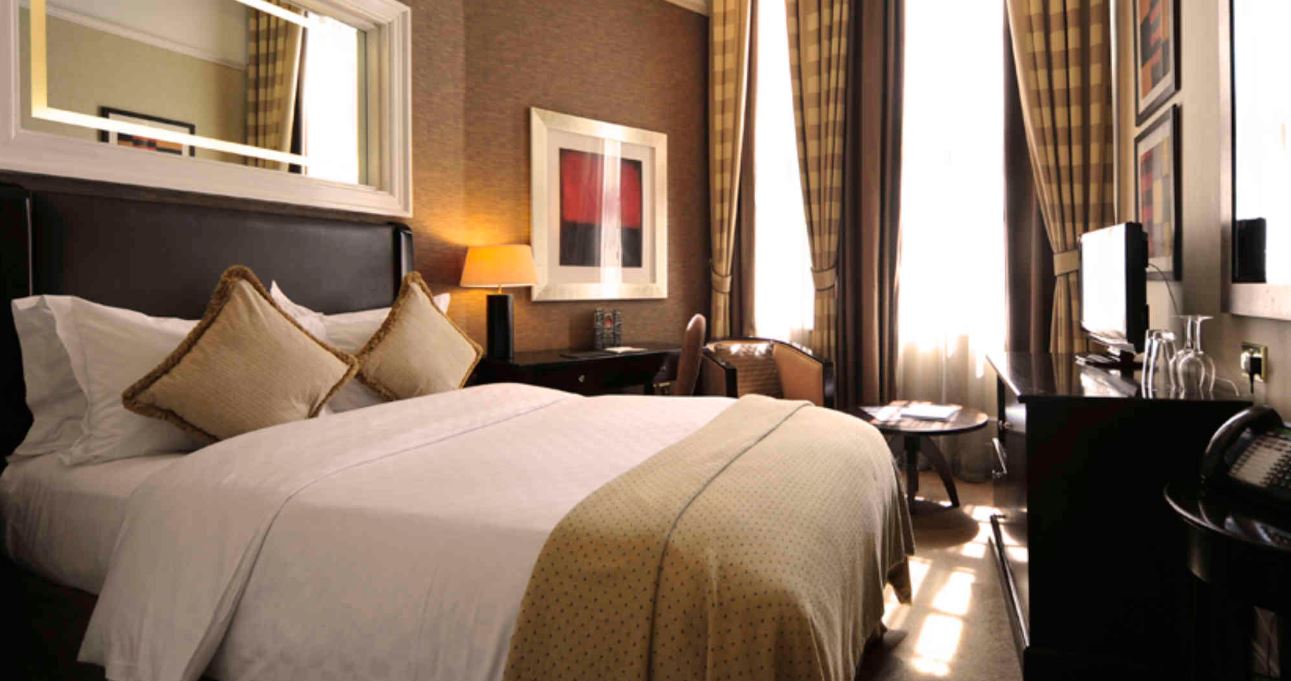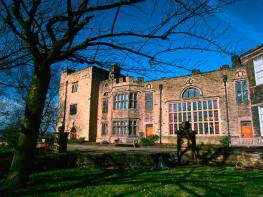Constructed around a 19th-century house, this stylish, modern hotel enjoys a peaceful location…
The ruins of Howley Hall

One of Yorkshire’s finest mansions was demolished three centuries ago but the view it commanded still impresses.
1.75 miles (2.8kms)
About the walk
Little remains above ground today of the splendid Tudor mansion that once stood between the towns of Morley and Batley. Nevertheless Howley Hall was a magnificent structure, one of the finest Elizabethan houses in Yorkshire. It commanded the visual attention of a wide area, standing on a steep natural hillside above the Calder Valley, where the people of Dewsbury, Batley and Birstall could look upon it and marvel at the wealth of its owner.
The remains of Howley Hall
This walk, popular with locals, visits what remains of the hall and gives you the chance to enjoy the far-ranging views its occupants once enjoyed over the surrounding countryside. The hall was built by Sir John Savile in the late 1580s. Savile, a politician and magistrate, was Leeds’ first mayor, held the title Baron of Pontefract and was elected MP for the County of Yorkshire (known as a Knight of the Shire) several times from 1597. Sir John was an influential figure in the court of King James I but his son Thomas, who inherited the estate on Sir John’s death in 1630, was a wavering royal supporter. Charles I nevertheless made him the first Earl of Sussex in 1642, shortly after which a relative, Sir John Savile of Lupset, took possession of the hall on behalf of the Parliamentarians.
In 1643 Parliamentarian generals met there to plan an attack on Wakefield, which took place successfully on May 16. In response, a month later, the northern Royalist commander the Earl of Newcastle left Wakefield at the head of an army of 10,000 troops to attack Parliamentarian Bradford. On route, to prevent the Howley garrison launching a rearguard action, they laid siege to the hall, which somehow survived relatively unscathed. The Royalist Army was met by between 3,000 and 4,000 men under General Ferdinando Fairfax, who unsuccessfully attempted to head-off the attack on the ill-prepared city. The confrontation became known as the Battle of Adwalton Moor, an area now better known as Drighlington. It was expected that the city’s inhabitants would be slaughtered for their Parliamentarian sympathies but legend claims that a ghost appeared to the Earl of Newcastle and told him ‘Pity poor Bradford’.
Thomas Savile subsequently defected to the Royalist cause and the family continued to live at Howley Hall for years afterwards. On his death in 1661 it passed to his son James. On his death in 1671 the hall went into decline and the stone was taken by locals for other buildings; in 1719 some of its masonry was sold to be used in the construction of Bradford’s Old Presbyterian Chapel. What was left was demolished by gunpowder in 1730, to avoid further costly maintenance. The few remains above and below ground are now a scheduled monument.
Earthworks passed on the walk hint at the splendid landscaped gardens and raised bowling green. An illustration of the hall is displayed on the wall in the Needless Inn, close to the walk’s start.
Walk directions
Take the public bridleway along Howley Mill Lane. Just 76yds (70m) after passing beneath the railway, the bridleway bears off the track to the left, along a tree- and shrub-lined muddy path. Where it meets a surfaced track on a bend, bear left up the lane to walk past Howley Park Farm and through a gate beyond into a field.
Maintain direction, staying with the ascending path when it bears right beneath electricity cables. Ignore tracks off to the left until, 240yds (219m) beyond the power lines, a wide grassy track cuts across your path. Turn left on this, past the skeletal ruins of Howley Hall; though little remains above ground, gaping holes hint at buried cellars concealing potential dangers for the curious. It is easy, however, to see why Sir John Savile chose this spot to build his residence – the view is extensive, taking in Emley Moor TV transmitter, Castle Hill at Almondbury, the Peak District hills above Marsden and even parts of the South Pennines above the Calder Valley.
Continue along the track, then bear left at a fork, dropping into scrub oak woodlands. Ignore the next left fork and keep ahead. The path rides the crest of an embankment then turns left, steeply downhill, to follow a wide and worn track down through a crossroads of paths, all the way to Howley Mill Lane. Turn right there, to retrace your outward steps back under the railway tunnel to the start.
Additional information
Good tracks and field paths
Quiet lane, open grassland
Dogs should be on lead until you reach open country. Be aware of horses and riders on the tracks
OS Explorer 288 Bradford & Huddersfield
Park with care at the roadside, junction of Scotchman Lane/Timothy Lane and Howley Mill Lane, Batley. Do not park in Howley Mill Lane
None on route
<p>Take special care when crossing the railway near the end of the walk</p>
WALKING IN SAFETY
Read our tips to look after yourself and the environment when following this walk.
Find out more
Also in the area
About the area
Discover West Yorkshire
Everybody knows that Yorkshire has some special landscapes. The Dales and the Moors first spring to mind, but what about West Yorkshire? That’s Leeds and Bradford isn’t it? Back-to-back houses and blackened mills… Certainly if you had stood on any of the hills surrounding Hebden Bridge a hundred years ago, and gazed down into the valley, all you would have seen was the pall of smoke issuing from the chimneys of 33 textile mills. But thankfully, life changes very quickly in West Yorkshire. The textile trade went into terminal decline, the mills shut down forever and in a single generation Hebden Bridge became a place that people want to visit.
The surrounding countryside offers walking every bit as good as the more celebrated Yorkshire Dales; within minutes you can be tramping across the moors. And this close proximity of town and country is repeated all across West Yorkshire. There’s such diversity in the area that you can find yourself in quite unfamiliar surroundings, even close to places you may know very well. Take time to explore this rich county and you will be thrilled at what you find to shatter old myths and preconceptions.
Nearby stays
Restaurants and Pubs
Nearby experiences
Recommended things to do
Why choose Rated Trips?
Your trusted guide to rated places across the UK
The best coverage
Discover more than 15,000 professionally rated places to stay, eat and visit from across the UK and Ireland.
Quality assured
Choose a place to stay safe in the knowledge that it has been expertly assessed by trained assessors.
Plan your next trip
Search by location or the type of place you're visiting to find your next ideal holiday experience.
Travel inspiration
Read our articles, city guides and recommended things to do for inspiration. We're here to help you explore the UK.













